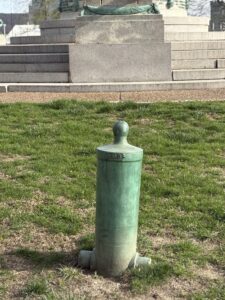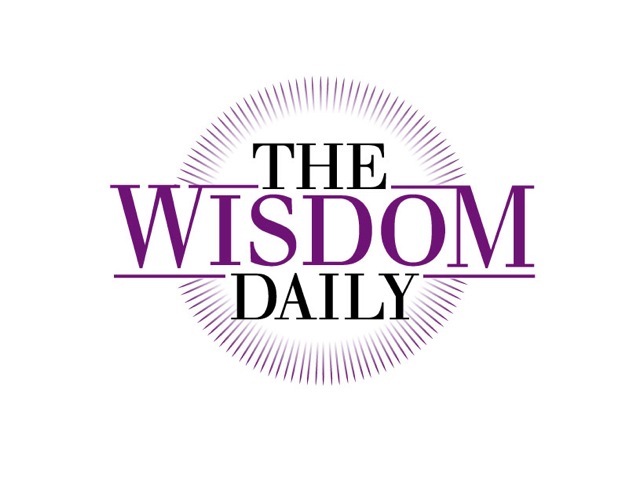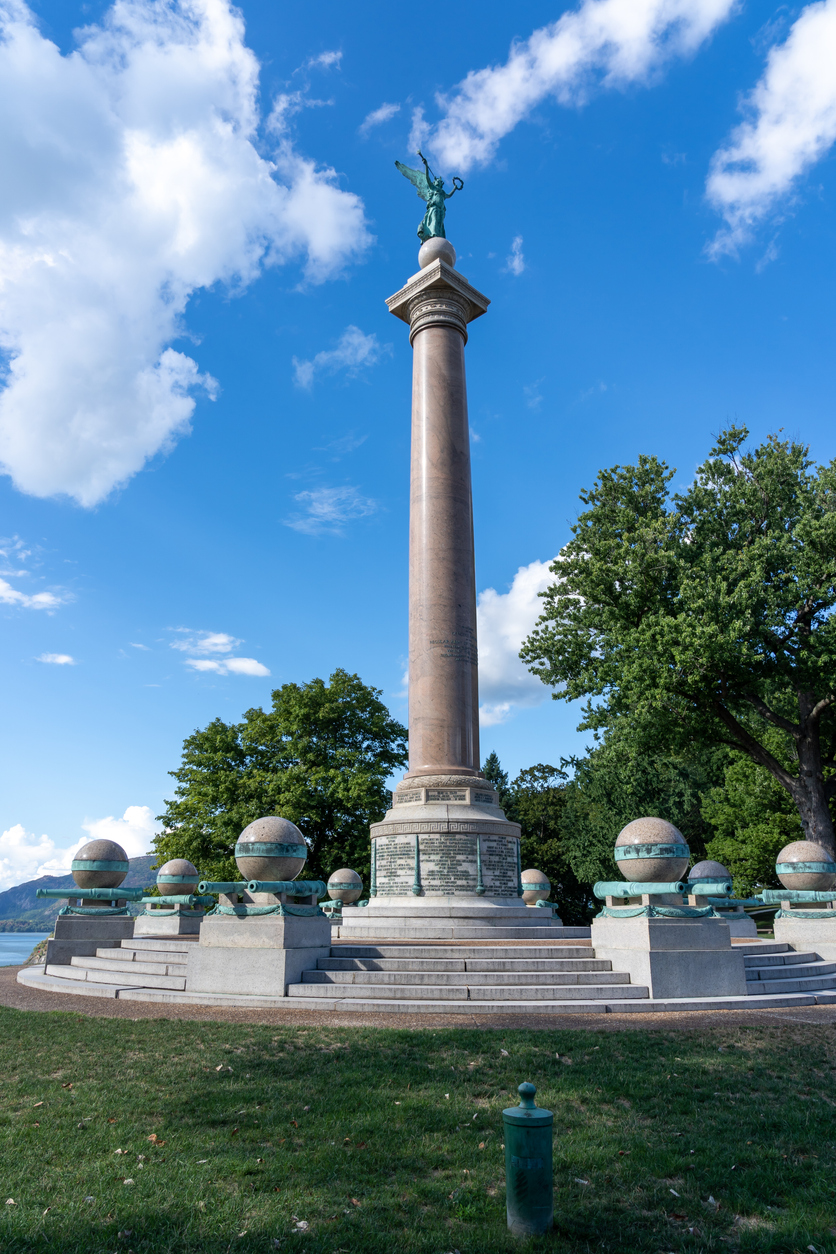This past Tuesday marked the last leg in a whirlwind tour of US Army venues where I’ve been asked to teach Clal’s unique perspectives on generational pluralism, the shifting sociology of American religion, and the intersection between mental health and spiritual practice. From keynoting the General Officer Symposium hosted by the War College to sitting on a panel on Holistic Health at the Association for the US Army to presenting my research to 13 4-Star Generals (active duty and retired) at the 4-Star Forum in the bowels of the Pentagon, I learned a tremendous amount at each stop about the true nature of service, of answering one’s call in life, and of unequivocal love of country.
Surprisingly, though, the most fascinating tidbit I picked up over these last few months came from the lowest ranks, from a group of remarkable Jewish cadets at West Point, who gave me an extended tour of campus between two of my speaking engagements. We began at the Crow’s Nest in Washington Hall, where previous presidents have presided over the 4,400-cadet mess hall. From there, we paused at the Washington Monument and the MacArthur Monument before touring the Arvin Physical Development Center, where I watched in awe as cadets half my age dashed through grueling obstacle courses in Olympic-record time, dove from 10-meter boards into an underwater relay, and wrestled one another into submission.
On the other side, we made our way to the banks of the Hudson, where George Washington once held back British ships with a “Great Chain” of forged iron links. Oddly enough, at first glance, they looked a bit light to hold back battleships, and as one of my guides noted, a recent study found that they wouldn’t have actually held back the ships. But the mere sight of them was enough to prevent the British from advancing.
Finally, we stopped at the Battle Monument, a 46-foot tall pillar composed of the single largest piece of shaped granite in the world, wrapped at its base with the names of 2,230 Army officers and soldiers who gave their lives for the Union during the Civil War. The monolith itself is breathtaking: hewn perfectly, not a scratch or blemish or spot of rust to be found after 128 years. The sun—just making its way past its midday zenith—lit the surface of the stone like fireworks, so bright I had to squint to look at it.
Just as I was about to ask a question about the monument, I saw a group approaching us from the periphery. Dressed in all-black suits, with their tzitzits flowing in the wind, I quickly put two and two together: West Point is a little more than 10 miles from Kiryas Yoel, a Hasidic enclave that—among other distinctions—is both extremely insular and unfathomably impoverished.
As they approached, a feeling surfaced in me that I quickly recognized as shame. The first thing I thought of was a flashback to my years as a pulpit rabbi, when members of Hasidic communities would visit in the weeks leading up to the holidays, often seeking financial support. Those exchanges were rarely easy—our discretionary funds were limited, and what I could offer often felt inadequate. The interactions left us both feeling unsettled, even disappointed. I wish I could say I met those moments with openness and warmth, but more often, they were marked by tension and discomfort. And now, seeing them again, that same old reaction stirred—not because of them, but because of the story I had already begun telling myself.
The second thought that raced through my mind was about all of the ways that our Jewishness and our citizenship in America played out differently. Statistically speaking, we vote differently. Liturgically speaking, we pray in different tongues. Gastronomically speaking, we eat different foods. And if the latest Pew Study of American Jews is to be believed, we likely see very little in common with one another’s methods of living out our Judaisms.
As they made their way towards us, I assumed that the scenes of my yesteryear would play out once again; maybe they would ask for support, I would only be able to offer the small amount of cash in my wallet, and we’d all feel “meh” about the exchange. Or maybe we’d get to chatting, and an issue of division would come up, and we’d end up on opposite sides of an impassioned disagreement. Something was going to happen that would change the course of my day; I could feel it in my bones.
So I braced myself for it. But instead, when they arrived to stand next to us as we beheld the magnificent Battle Monument, I was greeted with a gregarious “Shalom,” paired with a generous smile from one of the gentlemen who noticed the kippah on my head and gestured to his own. “Look at us,” he signaled without words, “same-same.”
In this week’s Torah reading, Tazria-Metzora, we read about a slew of skin conditions and the range of methods that the Priests use in order to treat them. Without getting into the details of each of the maladies, what’s relevant here is that they are often referred to as “eruptions” which —left untreated—can spread quickly and dangerously. And because everything in the Torah is assumed to have an important underlying meaning, these afflictions are understood to be outward manifestations of inner spiritual maladies. Unkind thoughts can yield painful skin conditions, harmful words lead to eruptions of leprosy, and so on.
Of course, as I reflect now on my internal reaction to the approaching Jewish group at West Point, I see that I have my own malady to address, that I’m afflicted with the disease that has spread throughout our society—internal biases, mistrust of strangers, assuming the worst of others, the shrinking of my worldview due to polarization. All this is true.
But what’s surprising about the Torah text is that the Priest—whose responsibility is to ensure the eradication of these diseases—does not rest after taking an initial assessment of the patient’s condition. Rather, he is required to inspect the individual at least three times. His first impression—good or bad—is set aside, and so too the second one. Because the gravity of the Priest’s diagnosis is so heavy, he must ensure that he sees the individual as a whole human, through and through, or else his work is not done.
One can imagine the intimacy of these moments of inspection: the priest and the patient in close quarters, the priest vulnerable to the spread of leprosy, the patient vulnerable to a damning diagnosis. And yet, in order for them both to fulfill this prescribed process, they both had to let their guards down, put their trust in one another (and in God, for that matter), and truly see each other in the fullest, starkest nakedness of their respective humanities.
The only way to move forward when faced with such an outbreak was to go through it, all of it, together, with trust and dignity preserved.
Back to my moment of revelation at the Battle Monument. The cadet leading this part of the tour finally shared—with a now-expanded audience—the most fascinating tidbit that I’ve learned over these past few months.

Surrounding the base of the Battle Monument, there lies a handful of oddly shaped, light-green poles, each individually numbered and each cresting with a small iron ball at the tip. Their purpose evaded me, so I asked the cadet to explain. As it turns out, they weren’t poles, or supports, or pillars, or anything of the sort. They were Civil War cannons that had once been used by Americans, against Americans. More pointedly, they were used by two West Point graduates—General Lee and General Grant, who graduated in 1829 and 1843, respectively—who found themselves on opposing sides of the war that would come to define our country.
Now buried face down in the ground, the cannons stand as monuments to a divided nation—brother against brother, a war that nearly tore us apart. But looking at them, I saw more than history. Their downward posture felt like they were burying their heads in shame, an apology, and in that moment, they mirrored my own—a quiet reckoning with the assumptions I had made just moments before. Like those cannons, I found myself turned inward—not defeated, but disarmed by the simple, human power of being seen. And perhaps most powerfully, they serve as a reminder to all who walk those grounds: we must never again turn our weapons—of war, of words, or of judgment—against one another.
Just as we invest in the cadets who represent the brightest future that our country can imagine (and these young cadets are precisely that), we must never forget where we came from, even and especially those dark periods in our history that shaped us into who we are today.
And finally, they served as a reminder to me personally, that while I might not hold cannons in my hands, I am equipped with weapons in the form of words, whose capacity to destroy worlds is arguably just as great. The Civil War Battle Monument, and the timely visit from my brothers from Kiryas Yoel, were precisely the reminders that I needed most.

